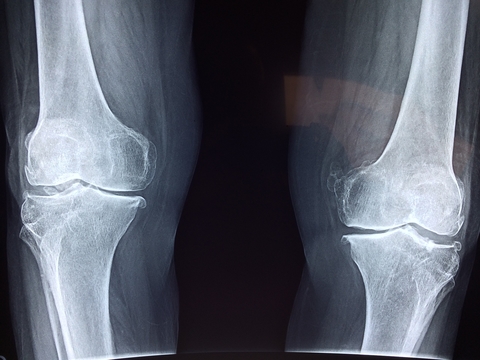
Irisin, the once much-hyped but controversial “exercise hormone” that researchers had hoped would be an effective obesity treatment, could make a comeback—this time in bone strengthening.
In a study published in the journal Cell, a team led by scientists at Harvard University Medical School found that injections of irisin in mice increased sclerostin, a protein produced by osteocytes that regulate bone formation. The team argued the findings could lead to future treatments for osteoporosis.
“These results are potential game changers in the fields of metabolism, muscle-bone biology, and exercise,” said the study’s senior author, Bruce Spiegelman, in a statement. “We show that irisin works directly on osteocytes, the most abundant cell type in bone.”
A paper that Spiegelman published in Nature in 2012 triggered the initial excitement over irisin. In that study, Spiegelman and colleagues identified irisin as a cleaved version of the FNDC5 membrane protein. The team showed that irisin, which is produced during exercise, could help turn unhealthy white fat into calorie-burning brown fat.
The study laid the groundwork for Ember Therapeutics, a FierceBiotech Fierce 15 winner in 2012. The company initially raised $34 million from venture capital bigwig Third Rock Ventures. Spiegelman himself came on board as chair and scientific founder at the company, which aimed to turn irisin into an anti-obesity treatment.
However, controversy soon followed. Questions mounted about the very existence of the hormone in people, even though Spiegelman later used mass spectrometry to prove in a Cell Metabolism study that irisin does exist. Third Rock eventually pulled away from Ember, which merged with Mariel Therapeutics.
Mariel ultimately returned the intellectual property around irisin back to Harvard. The new company, taking Ember’s name, recently voluntarily deregistered from the stock market.
Based on its last public statement, Ember is now focused on developing bone therapeutics. And that’s where Spiegelman and his team intend to revive hope for irisin.
Mammalian bones go through constant remodeling, swapping in new bone cells for old or damaged ones. It starts with the breakdown of old bone cells, a process that modulated by the protein sclerostin. Some recent studies have shown that very low doses of irisin can improve bone density and strength in mice. But the underlying mechanism was unclear.
In the new study, Spiegelman’s team found that irisin functions through a receptor called aV/b5 integrin to boost bone cell survival and production of sclerostin. Discovering the irisin receptor marks a step toward finding new cells that respond to the hormone, Spiegelman said.
What’s more, after injecting mice with irisin intermittently for six days, the researchers observed higher levels of sclerostin in the animals’ blood and increased bone mass. Mice genetically modified to lack irisin were also found to be resistant to ovariectomy-induced bone loss, the team reported. Irisin could “also act on remodeling in a favorable manner with intermittent pulse dosing,” the researchers wrote in the study.
The Harvard-led team now plans to focus on optimizing irisin and antibodies to irisin, said Spiegelman. They haven’t given up on obesity, however, so they’re still examining the hormone’s effects on fat, and they’re also testing it in nervous-system disorders.

























